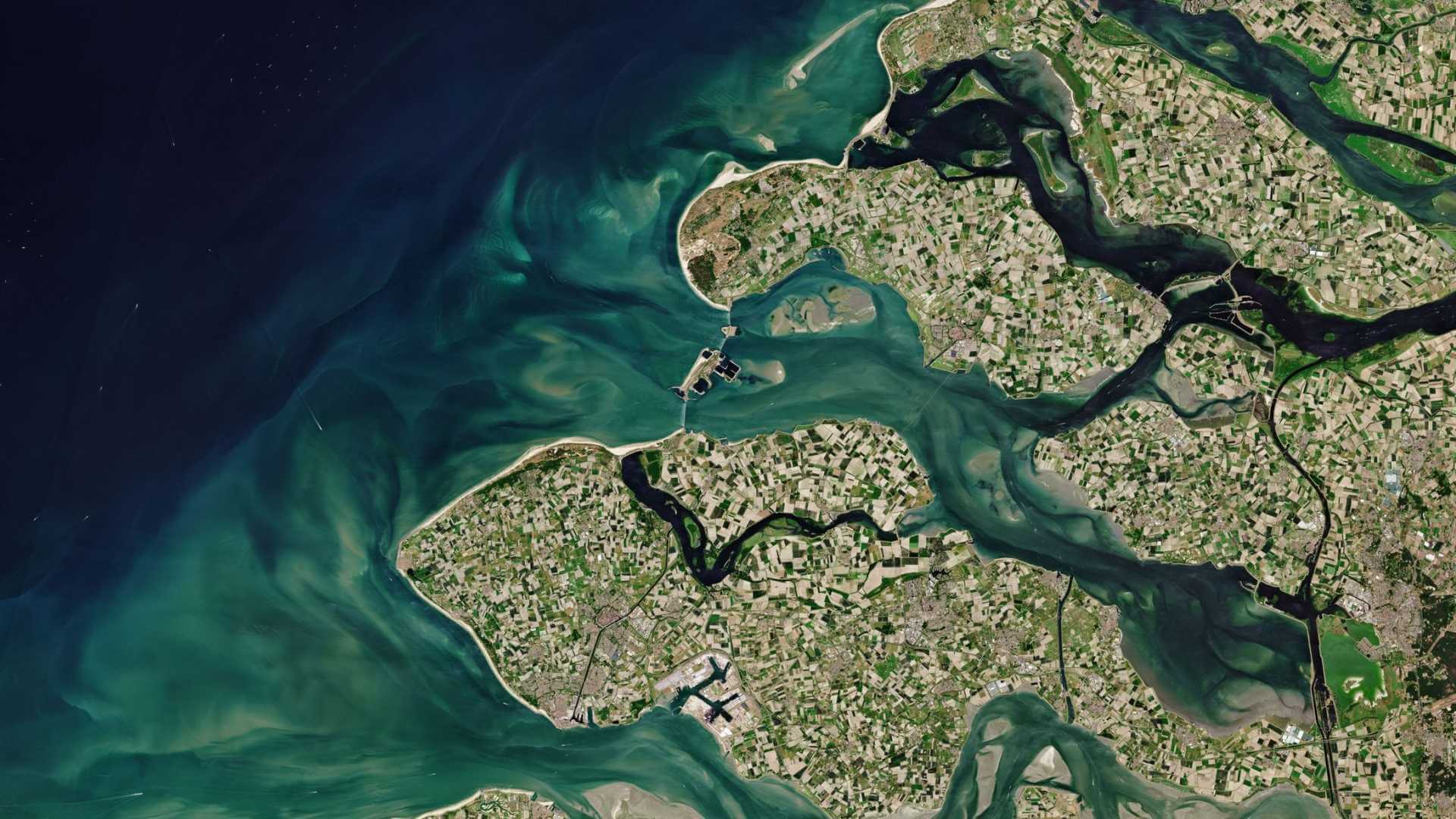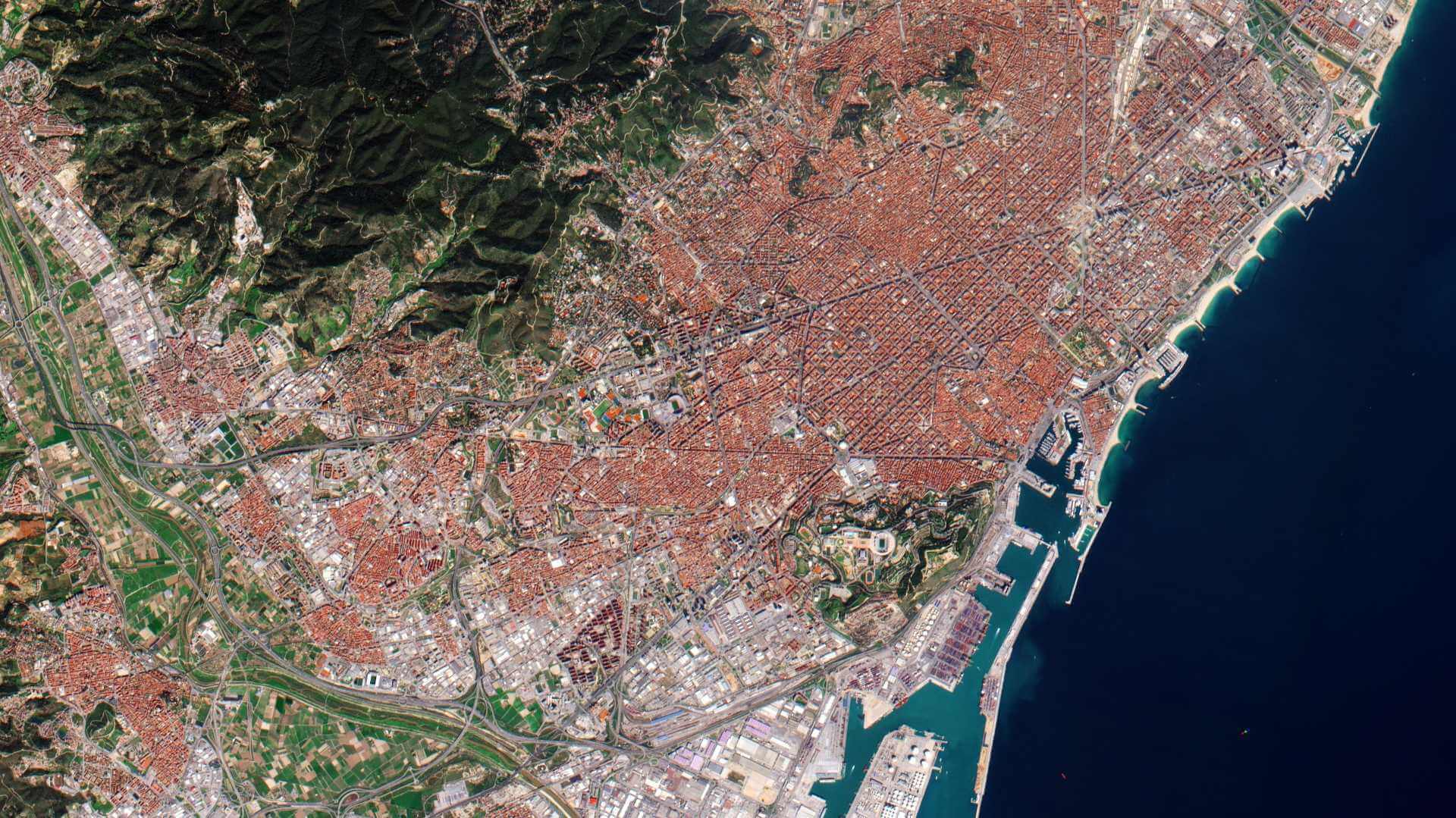Featured
About SPOT 5
SPOT 5 (Satellite pour l'Observation de la Terre) was a commercial Earth-imaging satellite from CNES (Centre National D’Etudes Spatiales), the French Space Agency. It was launched on 4 May 2002 and ceased operations after a malfunction in March 2015.
| Orbit Height | 832 km |
| Orbit Type | Sun-synchronous circular polar |
| Orbit Duration | 101 mins |
| Repeat Cycle | 26 days |
SPOT 5 Objectives
SPOT 5, like all the SPOT missions, was aimed at supplying high-resolution, wide-area optical imagery. This was designed to improve the knowledge and management of Earth's resources, detecting and forecasting phenomena involving climatology and oceanography, and monitoring human activities and natural phenomena. SPOT 5 had the particular goal to ensure continuity of services for customers and to improve the quality of data and images provided by the previous SPOT missions by anticipating changes in market requirements.
SPOT 5 Instruments
High-Resolution Geometric (HRG)
SPOT 5 had two HRG instruments that were deduced from the HRVIR of SPOT 4. They offered a higher resolution of 2.5 to 5 metres in panchromatic mode and 10 metres in multispectral mode (20 metre on short wave infrared 1.58 – 1.75 µm). Both instruments were able to operate in two modes, either simultaneously or individually; they had a swath of 117 km2 if operated simultaneously with an overlap of 3 km2.
The HRG instrument had an oblique viewing capability of 27° on each side of the local vertical.
| Parameter | Panchromatic Band | MS (Multispectral) Bands | SWIR Band |
| Swath Width | 60km | ||
| FOV | ±2º | Focal length of telescope | 1.082 m |
| Oblique viewing angle | ±27º | HRG size | 2.65 m x 1.42 m x 0.96 m |
| HRG mass | 356 kg | HRG power (max) | 344 W |
| Telescope type | Catadioptric Schmidt telescope with a spherical mirror (SPOT-4 heritage) | ||
| Spectral range (µm) | 0.48-0.71 | B1: 0.50-0.59 B2: 0.61-0.68 B3: 0.78-0.89 | 1.58-1.75 |
| Detector elements/line | 12,000 (THX31535 CCD) | 6,000 (TH7834 CCD) | 3,000 (TH31903 CCD) |
| Number of lines | 2 offset | 3 registered | 1 |
| Detector size (pitch) | 6.5 µm | 13 µm | 26 µm |
| Integration time per line | 0.752 ms | 1.504 ms | 3.008 ms |
| GSD (Ground Sample Distance) | 5 m x 5 m single image 2.5 m x 2.5 m dual image | 10 m x 10 m | 20 m x 20 m |
| SNR | 170 | 240 | 230 |
| MTF | >0.2 | >0.3 | >0.2 |
High-Resolution Stereoscopic (HRS)
The HRS imaging instrument operated in panchromatic mode and pointed forward and backward enabling it to take stereo pair images to show map relief with scene lengths up to 600 km. SPOT 5 provided imagery with a swath of 120 km2.
| Parameter | Value | Parameter | Value |
| Spectral range | 0.48 - 0.70 µm (Pan) | FOV | ±4º (120 km swath) |
| Telescope focal length | 0.580 m | Integration time per line | 0.752 ms |
| GSD | 10 m cross-track 5 m along-track | Detectors/line; Detector pitch | 12,000 6.5 µm |
| MTF; SNR | >0.25; >120 | Instrument mass | 90 kg |
| Instrument power | 128 W | Instrument size | 1 m x 1.3 m x 0.4 m |
Other Instruments
Vegetation-2: With some minor improvements regarding instrument operations, the Vegetation-2 instrument (VTG-2) is identical in its technical specification to Vegetation flown on SPOT 4. This instrument can cover almost all Earth's surface in a day because of its swath size of 2250 km. It captures reflected light in four spectral bands (blue, red, near-infrared, and middle-infrared).
SPOT 5 Data
DATA COLLECTIONS
ESA offers registered users access through the Online Dissemination server to the following SPOT collections:

